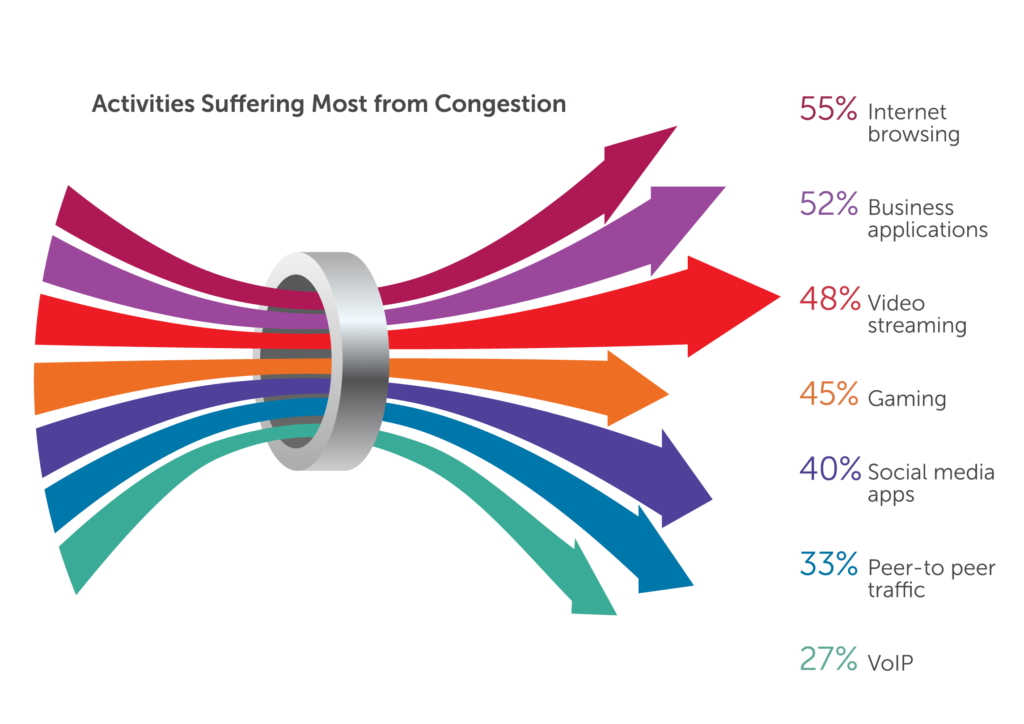Partner content: Fixed Wireless Access (FWA) is a promising way to bridge the digital divide but it needs to be able to scale and manage rising volumes of traffic
The world is moving forward in its digital transformation, and the demand for reliable and high-speed internet continues to soar. Fixed Wireless Access (FWA) has emerged as a promising solution to bridge the digital divide, especially where xDSL customers are looking to upgrade to fast broadband to accommodate their digital lifestyles but do not have access to a fibre connection.
According to Statista, FWA will account for 21% of all fixed broadband connections globally by 2030. It will have the largest share of the fixed broadband market, surpassing even fibre. What’s more, FWA subscribers expect their wireless access to behave like fixed broadband on their large screens with OTT TV, gaming applications, browsing and work-from-home scenarios. This raises the bar for the quality of experience that FWA service providers need to ensure.
As with any technology, FWA comes with its own set of challenges. This article delves into these challenges and explores innovative solutions, particularly focusing on how traffic management can significantly enhance the quality of experience (QoE) for both FWA providers and users.
Current FWA landscape
FWA delivers internet connectivity using wireless technology to connect fixed locations, such as homes and businesses, to the internet. This approach is particularly advantageous for remote and rural areas where the deployment of fibre connections is either too expensive or logistically challenging.
The growing adoption of FWA is driven by its lower infrastructure costs, scalability, and flexibility. In addition, 4G FWA is already four times faster than xDSL. With the advent of 5G spectrum, FWA will get a further growth boost as the wireless experience of FWA gains parity with the fixed broadband experience.
Despite these advantages, the rapid increase in internet usage poses significant challenges for FWA providers. A study by Coleman Parkes, commissioned by Allot, reveals that 87% of FWA providers anticipate a rise in traffic on their networks within the next year, with 40% expecting a 10-20% increase and 20% bracing for even higher growth.
This surge is driven by the proliferation of connected devices, the rise of data-intensive applications like video conferencing, video streaming, online gaming, and the increasing use of cloud services.
Key Challenges for FWA Providers
Network Congestion
Network congestion is one of the most pressing issues faced by FWA providers. As more devices connect to the network, the demand for bandwidth increases, leading to slower speeds and reduced service quality during peak usage times. According to the Colman Parkes report, internet browsing and business applications are among the most impacted activities, with over 50% of respondents identifying these as top concerns. 57% of respondents indicated that they experience congestion in 10-20% of their cell sites. Considering the expected traffic growth in FWA and 5G in general, it can be expected that more congestion is on the way.

Quality of Experience (QoE)
Ensuring excellent QoE is crucial for subscriber satisfaction and retention. However, the Coleman Parkes survey indicates that while only 53% of Wireless Internet Service Providers (WISPs) rate the QoE for business customers as excellent during peak times, only 42% can say the same for residential customers. This disparity underscores the need for effective traffic management solutions that can prioritize critical applications and maintain high service standards across all user types.
High equipment costs, regulatory hurdles
Deploying and maintaining FWA networks involves significant financial investment. High equipment costs are a major challenge, cited by half of the surveyed providers. Additionally, regulatory and logistical issues, such as obtaining permits and finding tower space, further complicate the deployment process. When WISPs are not able to add infrastructure, or are not able to add it in a timely manner, the combination of existing infrastructure plus increasing traffic can lead to reduced QoE, and thus to churn or reduced capacity for business growth.
Traffic management solutions
To address these challenges, advanced traffic management solutions, with FWA application-aware Traffic Management capabilities, offer a comprehensive approach to managing network congestion and enhancing QoE.
Dynamic application, recognition, prioritisation
Allot’s solution employs Dynamic Application Recognition Technology (DART) to identify user traffic and applications dynamically. This, and other technologies use multiple inspection methods to analyze application behavior, network performance, to prioritize application performance and user QoE. By applying sophisticated congestion management policies on a per-subscriber and per-application basis, it ensures that sensitive applications and high-end service plan customers receive the bandwidth they need, even during peak times.
Real-time congestion management
Real-time congestion management is crucial for maintaining optimal network performance. Using advanced congestion management techniques to enforce prioritization policies in real-time, an advanced solution ensures that subscribers experience optimal speed and QoE even during periods of high traffic. This dynamic adaptation helps maintain efficient and equitable access for all users.
More subscribers per cell
Employing a real-time congestion management solution in an FWA network can optimize the capacity for the given bandwidth for each cell, maintaining or improving QoE and creating a situation where the provider can service a larger number of subscribers on each cell.
This makes each investment in FWA infrastructure more cost-effective and enables the provider to support more satisfied customers within a geographical area: statistical analysis of different scenarios shows a potential increase of 10-30% in additional users per cell when a real-time congestion management solution is employed.
Differentiation between service packages
By prioritizing QoE for specific applications, a service provider can offer subscribers service packages that guarantee QoE for the applications that they consider important, such as streaming, browsing, gaming and business applications. By differentiating service packages, the service provider can develop new revenue streams while ensuring that FWA customers get the service that they expect for the applications that they value most.
Fair usage policy enforcement
Implementing fair usage policies is another key feature of an advanced traffic management solution. These policies ensure that network resources are distributed equitably among subscribers, preventing any single user from monopolizing bandwidth and degrading the experience for others.
Benefits of Advanced Traffic Management
Enhanced subscriber satisfaction
Improved QoE and service differentiation lead to higher subscriber loyalty and reduced churn. By ensuring that critical applications receive the necessary bandwidth, operators can deliver a superior user experience, thereby increasing customer satisfaction.
Cost reduction
Advanced traffic management solutions can achieve significant bandwidth savings, reducing the need for immediate infrastructure investments. Allot’s solution, for instance, can save up to 30% in bandwidth, directly lowering capital expenditures (CapEx) and operational expenses (OpEx) associated with capacity expansion.
Scalability and flexibility
Scalability is a critical requirement for growing FWA networks. A traffic management solution should be implemented in the core network so that it can be quickly and easily applied to any cell where it is needed. It should be designed to scale seamlessly, supporting unlimited capacity across the network. This ensures that it can meet the evolving demands of a growing subscriber base without compromising performance.
Advanced traffic management for FWA success
As the demand for high-speed internet continues to grow, FWA providers face significant challenges in managing network congestion and ensuring high end QoE. Advanced traffic management solutions, such as those offered by Allot, provide a comprehensive approach to addressing these issues. By leveraging dynamic application recognition, real-time congestion management, and fair usage policy enforcement, FWA providers can enhance subscriber satisfaction, reduce costs, and scale their networks efficiently.
In a world where digital connectivity is becoming increasingly essential, innovative traffic management solutions are not just a luxury but a necessity. They enable FWA providers to deliver reliable and high-quality internet services, ensuring that both urban and rural areas can enjoy the benefits of the digital revolution.
As FWA technology continues to evolve, adopting these advanced solutions will be crucial for providers looking to stay competitive and meet the ever-growing demands of a connected world. For a more in-depth look at how CSPs can improve the quality of experience for their FWA customers, you can view the Allot webinar on the subject – Masterclass For FWA: Future-Proof Your QoE Strategies
The author, Moti Goldshtein, is VP Product Management at Allot



